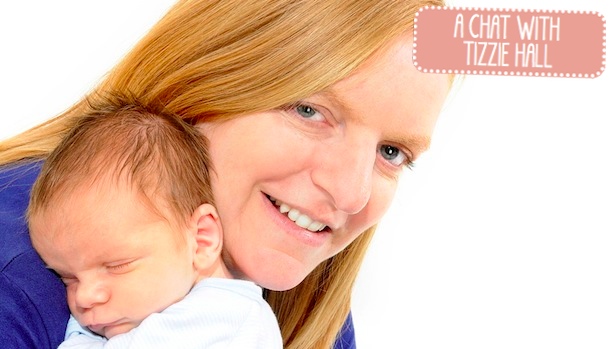
With speak to best selling author and sleep guru, Tizzie Hall about how to help our babies sleep well in our hot and humid climate.
1. What’s the best way to swaddle a baby in the tropics? It’s far too hot and humid for blankets!
Babies need to be a lot warmer than us to sleep and feed well, we need to remember they do not feel the heat like we do. Your baby has come out of a very confined space where the temperature is around 38 degrees. I believe you should swaddle your baby until he shows signs of trying to roll swaddled (Ed note. Tizzie’s website has a helpful Safe Bedding Guide that shows you what type of bedding is best to use in different temperatures).
2. Should I run air conditioning in my baby’s room when he is sleeping? If so, what’s the best temperature to set it on?
I believe you should only run the air conditioning in your baby’s room if it’s over 32 degrees in the room. If it’s over 32 degrees run the air conditioning at 34 degrees and follow the bedding guide from my website for a room of 32 degrees. This is because a room air conditioned to 34 degrees feels like 32 degrees to a baby.
3. How do I know if my baby is overheated? It’s always so hot in Singapore.
If your baby is overheating you will see the following signs — your baby will be waking and moaning, he will have a sweaty back, tummy or back of neck, he will have sweaty or wet clothes and he may have shallow and/or rapid breathing.
4. What’s the best way to keep my baby hydrated? I worry that he’ll suffer in the Singapore heat.
If you are out and about in hot weather and the temperature is over 32 degrees, I recommend you breast or bottle-feed your baby, or offer 20mls of cool, boiled water to avoid becoming dehydrated.
5. Can I still use a sleeping bag when it’s hot? What should I look for in a good sleeping bag?
You absolutely can use a safe sleeping bag when it’s hot — good sleeping bags come in three TOG ratings for different temperatures. If you do not have any air conditioning then you will be able to use a 0.5 TOG sleeping bag on very hot days and nights.
Here are some things to look for in a safe sleeping bag:
• Never use a sleeping bag made from a stretch material such as jersey and never use one where the zip is down the side. Make sure the sleeping bag has a front zip that zips downwards to close.
• Never use a baby sleep bag with poppers or buttons on the shoulders and always make sure it is fitted around the neck and arm holes (you’ll want to make sure that your toddler cannot slip into the bag).
6. How can I keep my baby safe when sleeping? I heard putting your baby to sleep with blankets or soft toys is generally discouraged because of the risk of SIDS.
Here are my tips to keep your baby safe while he or she sleeps.
-
- Make sure your baby’s head remains uncovered during sleep and never put your baby to sleep on a waterbed or beanbag.
- Tummy play is safe and good for babies when they are awake and an adult is present, but never put your baby on her tummy to sleep.
- Use a firm, clean, well-fitting mattress and always put your baby on her back to sleep.
- Purchase a cot with four slatted sides without an enclosed end – the more air circulation, the lower the risk of SIDS and always tuck in your baby’s bed clothes securely.
- Never use a plastic or PVC mattress protector in the cot because this stops air circulation and causes a baby to sweat.
- Never tuck your baby’s sleeping bag in under the cot mattress.
- Before using a baby sleeping bag make sure it has fitted neck and arm holes and check that your baby’s head cannot slip into the bag.
It’s a SIDS and SUDI risk to put soft toys in the cot with your baby so I would advise you not to do this. Cotton or Bamboo bedding is breathable and fine for use in the cot with a baby but other fabrics such as polyester or wool are discouraged because they can cause over heating and are a SIDS and SUDI risk.
7. My toddler is now in a big bed, how can I encourage him to sleep there? He keeps getting up and bedtime is getting later each night!
I am often asked to help toddlers whose sleep and settling problems began when they were moved to a normal sized bed too soon. If you move your toddler to a bed before he or she is mature enough, while it might be fine for the first few weeks, what generally happens is your toddler then realises he can get out of bed and will begin to test his boundaries. I recommend girls to be at least two and a half and boys three years old before they are moved to a big bed.
If your toddler is a boy and under three years of age and you are having night-waking or wandering problems, problems settling at night or problems getting him to have a day sleep, then I suggest you put him back into his cot until he is older. If your toddler is a girl and is under 2.5 years and experiencing these problems after moving to a bed, then I also suggest you put her back into her cot.
8. How do you respond to detractors who suggest that letting babies cry is harmful to their development?
I do not agree with leaving a baby to cry, my approach teaches a parent to understand their babies cries and in return meet their needs. When your baby does cry, I feel it is very important for you to listen. Babies need to be listened to. It is unfair on a baby to just desperately try to stop him from crying rather than trying to interpret his cries.
The main thing parents of older babies need to understand is the differences between a protest cry, which is like a temper tantrum, and an emotional cry, which occurs because a baby’s needs are not being met. If a baby is crying an emotional cry, you will see tears and hear sobbing (I often call this a wet cry). You should comfort an emotional baby straightaway. I feel very strongly that ignoring an emotional cry could cause psychological damage and stress to a baby, which is why I disagree with controlled crying, as walking in and then out is like teasing the baby and always makes him emotional.
With controlled crying, after a baby falls asleep he will continue to sob – this is what I call crying yourself to sleep. The other problem with controlled crying is that it can go on for hours at a time and sometimes take weeks before you see any results.
9. How do you keep your knowledge and information current and up to date? Seems the guidelines are always changing in regards to babies and their safety and wellbeing!
I am able to keep my knowledge up to date by going to conferences and seminars, however with the internet it is much easier to stay up to date now than it was when I first started consulting in 1996. I am able to keep all of my information up to date because my book is reprinted a few times a year and with each reprint I am able to update it.
10. Do you have any further information on why custard appears to interfere with sleep?
I don’t have any more information as to why custard interferes with sleep and causes problems, however I do know that cutting it out can cause an unsettled baby or toddler to sleep well. This includes homemade custards, so I believe you should hold off on giving your baby or toddler custard until he can talk and tell you if there is any problems like a pain in the tummy.
You can see Tizzie Hall live in Singapore on the 28th or 29th of September 2013 — all you need to do is buy your tickets here mama!






 View All
View All





 View All
View All











 View All
View All








